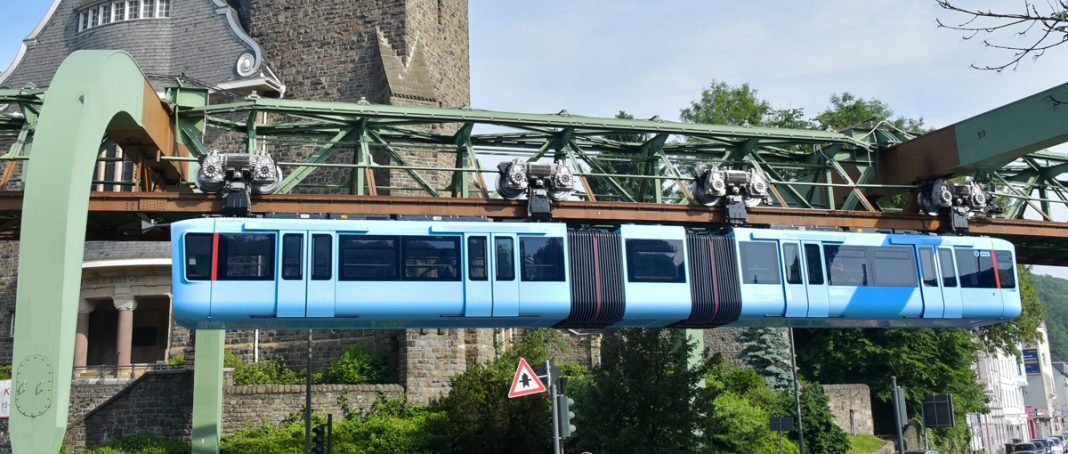The Wuppertaler Schwebebahn (Wuppertal Suspension Railway) is a suspension railway in Wuppertal, Germany. Its original name is Einschienige Hängebahn System Eugen Langen (Monorail overhead conveyor system Eugen Langen).
 It is the oldest electric elevated railway with hanging cars in the world and is a unique system in Germany.
It is the oldest electric elevated railway with hanging cars in the world and is a unique system in Germany.
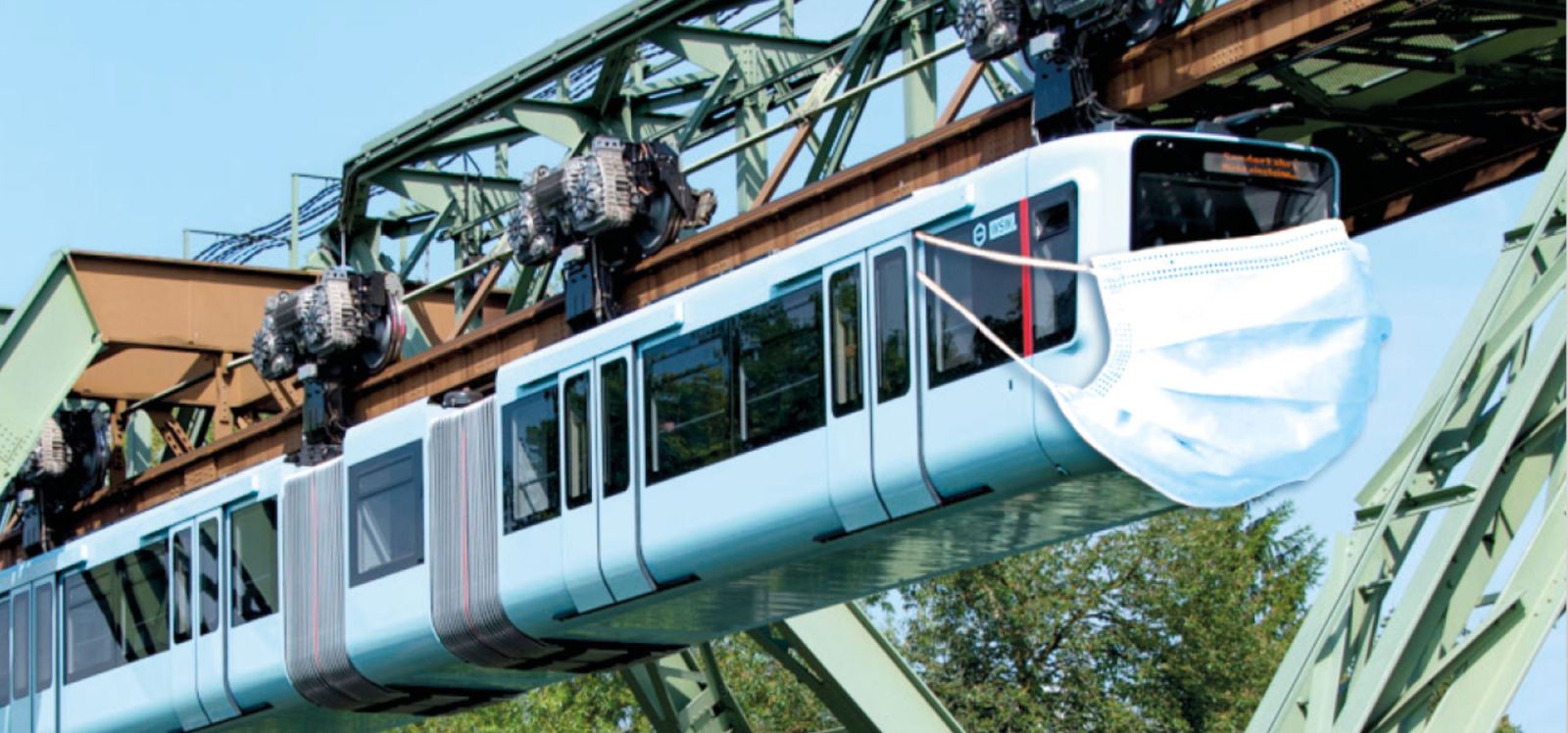 Designed by Eugen Langen and offered first to the cities of Berlin, Munich and Breslau who all turned it down, the installation with elevated stations was built in Barmen, Elberfeld and Vohwinkel between 1897 and 1903; the first track opened in 1901.
Designed by Eugen Langen and offered first to the cities of Berlin, Munich and Breslau who all turned it down, the installation with elevated stations was built in Barmen, Elberfeld and Vohwinkel between 1897 and 1903; the first track opened in 1901.
The railway line is credited with growth of the original cities and their eventual merger into Wuppertal. The Schwebebahn is still in use as a normal means of local public transport.
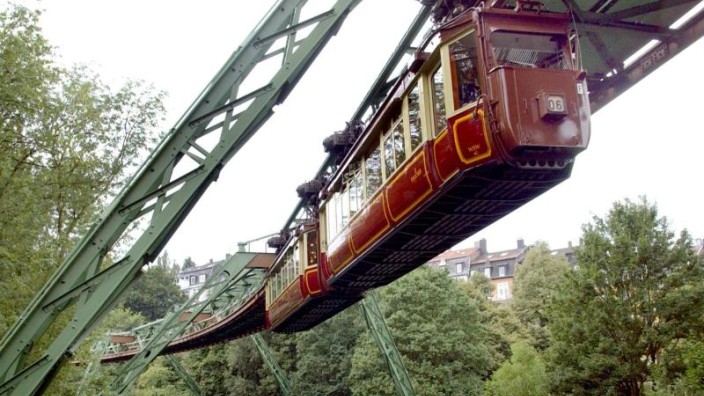 The railway is a one-of-a-kind transport system, so the renovation project had to be tailor-made. It took two decades for crews to finish work on the stations and the support structures along the track, which runs for 13.3 km. The project cost a total of € 634-million. The modernization work was completed in stages – while the rail line was still in use.
The railway is a one-of-a-kind transport system, so the renovation project had to be tailor-made. It took two decades for crews to finish work on the stations and the support structures along the track, which runs for 13.3 km. The project cost a total of € 634-million. The modernization work was completed in stages – while the rail line was still in use.
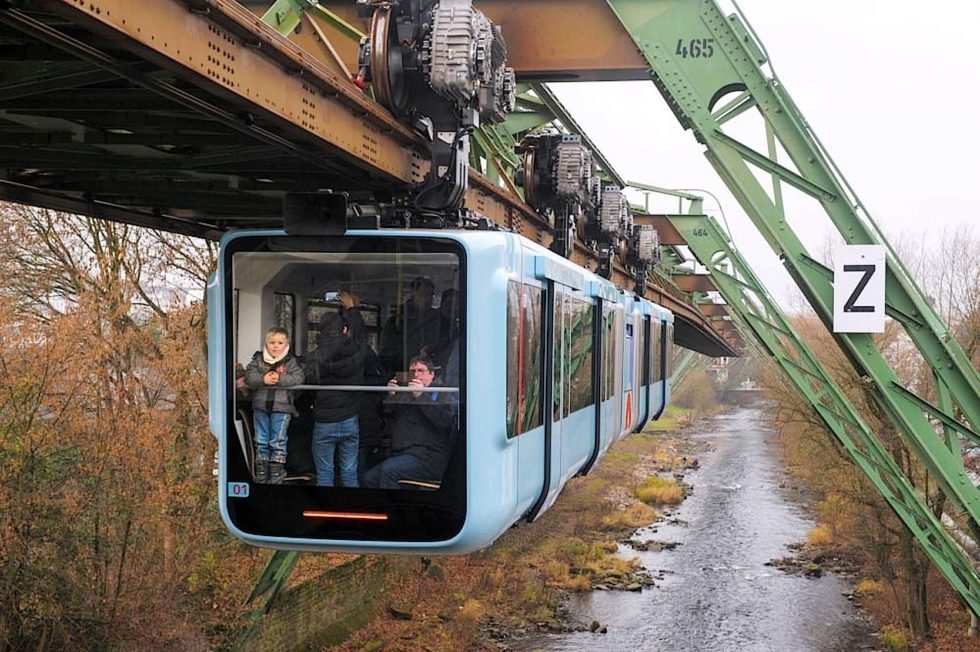 By early 2018, a total of 31 new rail cars will be in use. The railway will leave the first stop every two minutes, and travel through all 20 stations on the line more quickly than before.
By early 2018, a total of 31 new rail cars will be in use. The railway will leave the first stop every two minutes, and travel through all 20 stations on the line more quickly than before.
Wuppertal’s suspension railway is not only the city’s best-known landmark; it’s become famous throughout the world. After all, there are few cities that have a public transport system that moves 24-million passengers a year without ever touching the ground.
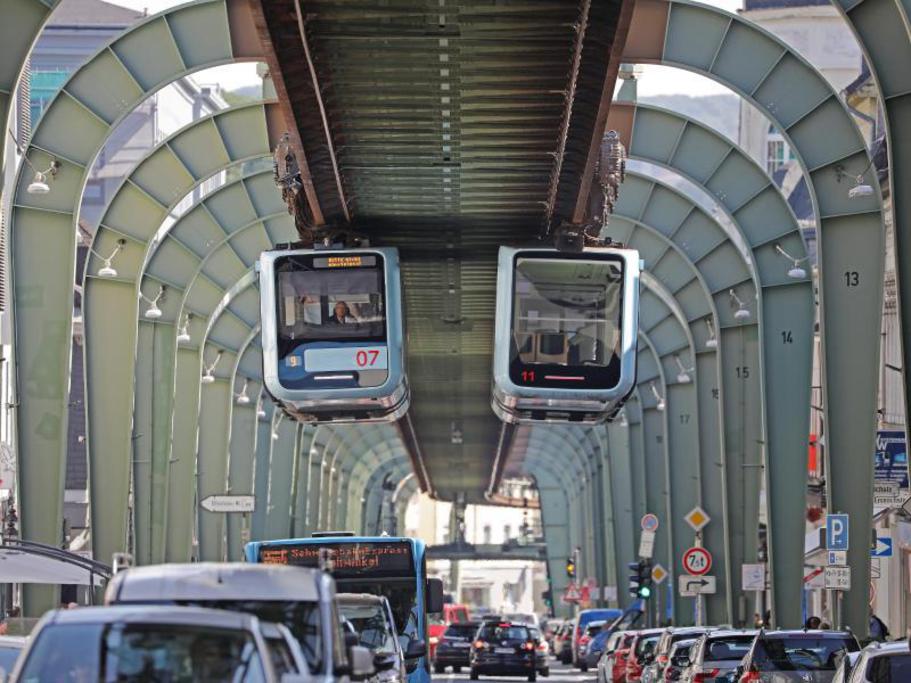 During the week, an estimated 85,000 passengers use the railway every day. By the end of the 19th century, the region’s industrial sector was thriving. Local officials decided that they could afford a groundbreaking transport system like the suspension railway – at a time when other German cities were merely building subways.
During the week, an estimated 85,000 passengers use the railway every day. By the end of the 19th century, the region’s industrial sector was thriving. Local officials decided that they could afford a groundbreaking transport system like the suspension railway – at a time when other German cities were merely building subways.


